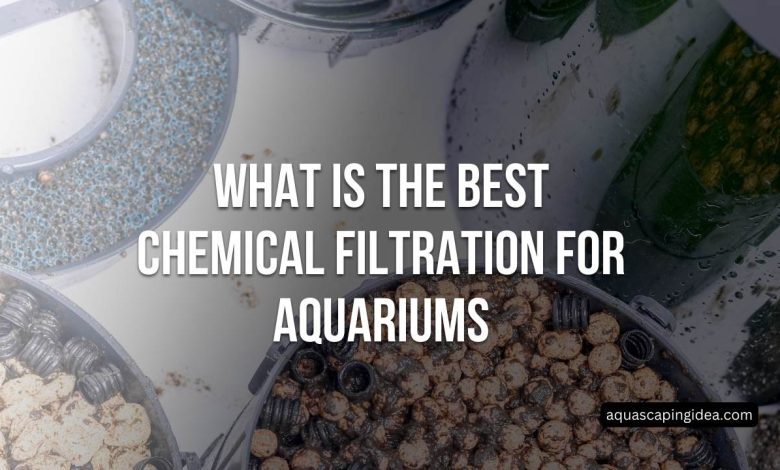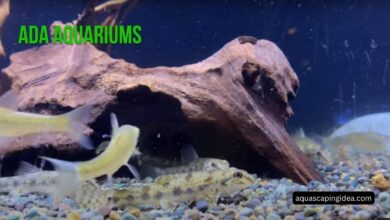What Is The Best Chemical Filtration For Aquariums?

Maintaining a thriving aquarium ecosystem requires balancing various interrelated elements with care, including water quality, the processes of microscopic life, and filtration mechanisms. Among these components, chemical filtration plays an indispensable role in ensuring the wellbeing of your aquatic inhabitants. Whether you’re a seasoned aquarium enthusiast or new to the hobby, comprehending the intricacies of chemical filtration can help construct a healthy and sustainable environment for your fish and flora.
We will plunge into the depths of chemical filtration for aquariums, exploring optimal options, advantages and disadvantages, and effective implementation. Activated carbon, resins and custom media are some methods we will cover, furnishing you with knowledge for astute decisions catering your aquarium’s unique needs. Uniform sentences fail to mimic life’s complexity; consider variation as nature varies in ways bountiful yet balanced.
The Importance of Chemical Filtration in Aquariums
Aquariums are closed systems, and as such, they are susceptible to the accumulation of various chemical compounds that can be harmful to the inhabitants. These compounds can originate from fish waste, decaying organic matter, or even tap water itself. Without proper chemical filtration, these substances can lead to a range of issues, including:
- Ammonia and Nitrite Buildup: Ammonia and nitrites are highly toxic to fish and can cause stress, respiratory problems, and even death if left unchecked.
- Discolored Water: Tannins and other dissolved organic compounds can discolor the water, making it appear yellow or brown, affecting the overall aesthetics of your aquarium.
- Odor Issues: Certain chemical compounds can produce unpleasant odors, indicating the presence of decaying organic matter or other harmful substances.
- Algae Growth: Excess nutrients in the water can promote the rapid growth of algae, leading to unsightly green or brown algal blooms.
By implementing effective chemical filtration methods, aquarium owners can remove these harmful compounds, maintain clear and odor-free water, and create a healthy environment for their aquatic inhabitants.
Types of Chemical Filtration for Aquariums
Activated Carbon
-
- Description: Activated carbon is a highly porous material made from carbonaceous substances, such as coconut shells or coal. It has an exceptional adsorption capacity, making it effective in removing dissolved organic compounds, odors, and discoloration from the water.
- Pros: Highly effective in removing dissolved organic compounds, odors, and discoloration; relatively inexpensive; easy to replace.
- Cons: Limited lifespan (typically 2-4 weeks); may remove beneficial compounds; requires regular replacement.
- Implementation: Activated carbon can be used in various forms, including loose granules or pre-packaged filter media bags or cartridges.
Ion Exchange Resins
-
- Description: Ion exchange resins are synthetic polymers capable of exchanging specific ions (e.g., ammonia, nitrites, nitrates) for other ions, effectively removing them from the water.
- Pros: Highly effective in removing specific chemical compounds; long-lasting; easy to regenerate.
- Cons: Can be expensive; requires regular regeneration or replacement; may alter water chemistry if not monitored properly.
- Implementation: Ion exchange resins are typically used in dedicated filter media bags or cartridges, often used in conjunction with other filtration methods.
Chemical Filter Pads
-
- Description: Chemical filter pads are specialized media designed to remove specific compounds from the water. They typically contain activated carbon, zeolites, or other adsorptive materials.
- Pros: Convenient and easy to use; effective in removing various chemical compounds; relatively inexpensive.
- Cons: Limited lifespan (typically 2-4 weeks); may require frequent replacement; may remove beneficial compounds.
- Implementation: Chemical filter pads are typically placed in designated filter media baskets or hung on the back of the aquarium.
Zeolites
-
- Description: Zeolites are natural or synthetic aluminosilicate minerals with a porous structure, capable of adsorbing and removing ammonia and ammonium ions from the water.
- Pros: Effective in removing ammonia and ammonium; long-lasting; can be regenerated.
- Cons: Limited capacity for other chemical compounds; requires regeneration or replacement; may alter water chemistry if not monitored properly.
- Implementation: Zeolites are typically used as a filter media in dedicated bags or cartridges, often in combination with other filtration methods.
Specialized Media
-
- Description: Various specialized media are available for specific chemical filtration needs, such as phosphate removers, nitrate removers, and heavy metal adsorbents.
- Pros: Targeted removal of specific compounds; can be used in combination with other filtration methods.
- Cons: Limited lifespan; may require frequent replacement; may alter water chemistry if not monitored properly.
- Implementation: Specialized media are typically used in dedicated filter media bags or cartridges, following the manufacturer’s instructions.
Factors to Consider When Choosing Chemical Filtration
When selecting the best chemical filtration method for your aquarium, several factors should be taken into consideration:
- Aquarium Size: The size of your aquarium will determine the amount and type of chemical filtration required. Larger aquariums may necessitate more robust or a combination of filtration methods.
- Stocking Density: The number and type of fish, as well as their waste production, will influence the chemical filtration needs. Heavily stocked aquariums may require more frequent filter media replacements or regeneration.
- Water Parameters: The specific water parameters you wish to address, such as ammonia, nitrites, nitrates, or dissolved organic compounds, will dictate the appropriate chemical filtration method.
- Ease of Maintenance: Consider the level of maintenance required for each filtration method, including frequency of replacements, regeneration, or cleaning.
- Cost and Availability: Evaluate the initial and ongoing costs associated with each filtration method, as well as the availability of replacement media in your area.
Implementing and Maintaining Chemical Filtration
Proper implementation and maintenance of chemical filtration systems are crucial for ensuring their effectiveness and preventing any potential issues. Here are some general guidelines:
- Follow Manufacturer Instructions: Carefully read and follow the manufacturer’s instructions for setting up and maintaining the chemical filtration media or systems.
- Establish a Routine: Develop a consistent routine for replacing or regenerating the chemical filtration media, based on the manufacturer’s recommendations or your aquarium’s specific needs.
- Monitor Water Parameters: Regularly test and monitor your aquarium’s water parameters to ensure the chemical filtration is working effectively and make adjustments as needed.
- Combine with Other Filtration Methods: For optimal water quality, consider using chemical filtration in combination with mechanical and biological filtration methods.
- Quarantine New Additions: Quarantine new fish, plants, or decorations before introducing them to your aquarium to prevent the introduction of unwanted chemicals or compounds.
- Avoid Overloading: Maintain appropriate stocking levels and avoid overfeeding to prevent excessive waste buildup, which can overwhelm the chemical filtration system.
Frequently Asked Questions (FAQ)
How often should I replace or regenerate chemical filtration media?
The frequency of replacement or regeneration depends on the specific media and your aquarium’s needs. Generally, activated carbon and chemical filter pads should be replaced every 2-4 weeks, while ion exchange resins and zeolites can last for several months before requiring regeneration or replacement.
Can chemical filtration remove all types of chemical compounds?
No, different chemical filtration methods are designed to target specific compounds. It’s essential to understand the capabilities and limitations of each method and choose the appropriate one(s) based on your aquarium’s specific needs.
Is it safe to use multiple chemical filtration methods simultaneously?
Yes, it is generally safe and often recommended to use multiple chemical filtration methods in combination, as they can target different compounds and work synergistically to maintain optimal water quality.
Can chemical filtration harm beneficial bacteria in my aquarium?
Some chemical filtration media, such as activated carbon, can potentially remove beneficial compounds or trace elements from the water, which may impact the biological filtration process. It’s essential to monitor your aquarium’s water parameters and adjust accordingly.
How do I know if my chemical filtration is working effectively?
Regular water testing and monitoring of specific parameters (e.g., ammonia, nitrites, nitrates, clarity, and odor) will help you determine the effectiveness of your chemical filtration system. If you notice persistently high levels of certain compounds or water quality issues, you may need to adjust or replace the filtration media.
Conclusion
Chemical filtration is an essential component of maintaining a healthy and thriving aquarium environment. By effectively removing harmful compounds, discoloration, and odors, it helps create an ideal habitat for your aquatic inhabitants. However, it’s crucial to understand that chemical filtration is just one aspect of a well-rounded aquarium maintenance routine.
Combining chemical filtration with mechanical and biological filtration methods, along with proper aquarium husbandry practices, will ensure a balanced ecosystem for your fish, plants, and other aquatic life. Regularly monitoring water parameters, maintaining appropriate stocking levels, and following a consistent maintenance schedule are key to achieving long-term success.



